Building realistic exterior and interior designs is a favorite hoppy of many LEGO fans. Making an authentic replica of your home, a prominent structure of your city, or some other building that you really like can be an interesting and rewarding challenge. One thing to keep in mind is that if your goal is realism, it’s best to step away from standard minifig-scale. While minifigs are cute, their scale and everything built to their scale are nowhere near realistic. Instead, it’s best to start with recreating a prominent feature of the structure you are modeling and scale everything from there.
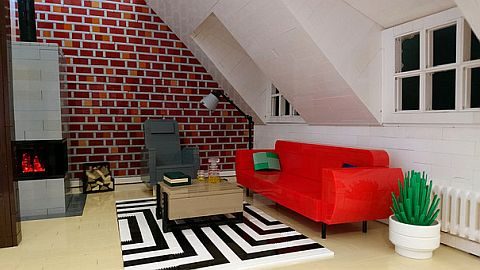
Freeing yourself from the constrictions and imperfections of minifig-scale can result in some stunningly lifelike models. To give you some examples, I thought to show you some of the work of one of my favorite LEGO interior designers Heikki M. Take a look at the attic apartment with the fireplace above. It looks so real, isn’t it? But everything you see here is made of standard LEGO elements. Notice the impressive masonry works on the back wall!
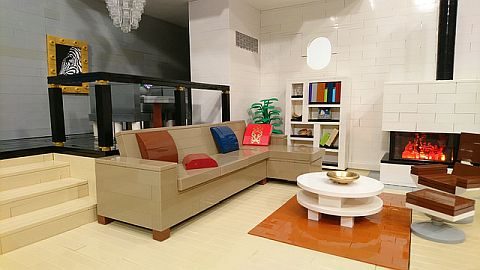

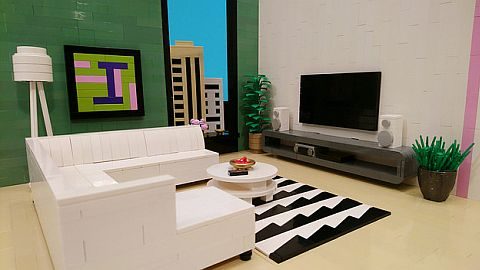
Here are a few other tastefully designed interior spaces with cleverly repurposed LEGO elements. Notice that even the view from the windows is brick-built, using forced-perspective techniques. The only thing not LEGO in these pictures is the zebra painting.
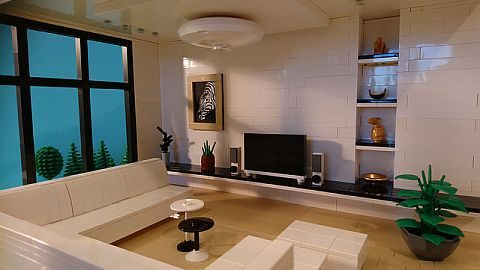
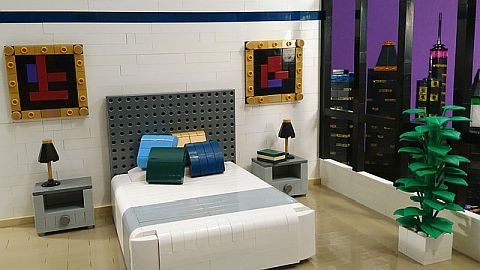


To find a use for brighter colors and cute LEGO animals, Heikki also build a children’s room with lots of toys and even added child-size toy kitchen appliances.
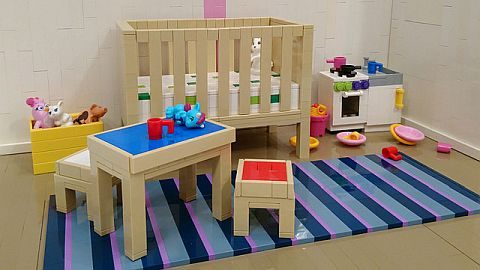
Speaking of kitchens, here is a full-size kitchen with a bar table and two seats, an induction stove, and lots of cabinets. The black refrigerator and cabinet handles give a nice counterbalance to the lighter-colored surfaces.
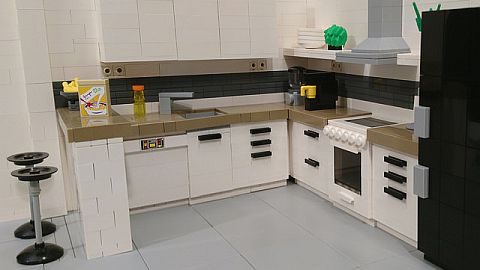
Heikki is Finnish, and a sauna is a sacred place for the Finns. He explains that in the heat of the sauna you can completely relax, and share your thoughts with your family and friends. He also mentions that the best place for a sauna is by a lake, so you can jump into the cool water after taking a hot sauna bath.
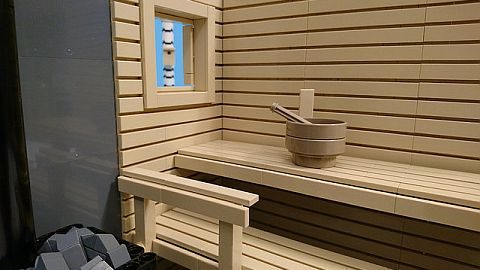
Another great interior space is this home theatre. The screen is constructed with lots of black pieces, and the stars are represented with translucent-clear round plates. As you can see, the seats work perfectly for the old LEGO Technic figures.
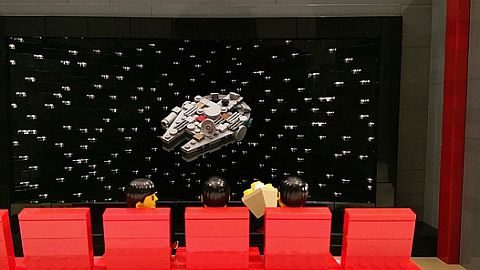
To give you a better idea of the size and scale of these models, here is a behind-the-scenes peek at the living room. If you want to put your models on permanent display, you want to finish the edges, but if you are just taking photographs, you can get away with only finishing parts of the model that will be in the picture. The wires you see are for lighting up the fireplace.

If you would like to build your own interior designs and are inspired by Heikki’s creations, I recommend checking out his Flickr gallery for more. What do you think? Have you ever tried to recreate the interior or exterior of a real-life structure? How did it go? Did you run into any challenges? Is anything interesting that you learned in the process? Feel free to share and discuss in the comment section below!
And you might also like to check out the following related posts:












Wow! I was sure the first picture wasn’t Lego! I’m still not convinced that brick wall is Lego. These are amazing!
OMG!!! I love these! I think I’m going to have a new hobby!
These are outstanding. This is the first time I have seen someone do the background in Lego like that. (I mean the scenes outside the windows). I’m also curious about that brick wall. How is that built? It looks so real!
If you go to their flickr page, you can zoom in to see the brick wall. It is basically plates and tiles cleverly arranged with subtle color variations. It does look very real! 😀
The sauna room is so nice! Simple, but nice. All the other rooms are clean, modern, and nicely finished. I could see this being a whole hobby. We are so focused on minifigures that we forget that we can build in other scales.
That’s a good point some old-timers often bring up. While minifigs made LEGO more friendly for the general consumer, and there is a whole sub-hobby of collecting minifigs, minifigs also put limitation on the way people think about LEGO. There is still the LEGO Technic line though, and some LEGO Creator sets that are outside minifig-scale.
If I didn’t know that I was on a Lego site, I think I was looking at an interior decorating site. That’s just too realistic looking. Wow!
Yeah, really classy stuff, isn’t it? 😀
Wow! So impressive. I am always amazed at how many different directions people take Lego as a hobby. I think that adults who played with Lego as children and haven’t been back to check out where the bricks have gone as a hobby are truly missing out. These designs illustrate that point so well. The possibilities are limitless.
Well said. Also, LEGO will grow with you. It can be a creative tool for our entire life. Play well! 🙂
Very good point, Melanie! Some while back I met a older adult couple I used to know as regular customers (I worked as a supermarket checker) and when they asked me what brought me to the mall I said ‘the Lego store’ and the look I got was if I proudly announced I played with wooden blocks for toddlers.
I decided to not press the idea for them to check the store out because they were with their special needs son and probably didn’t need the temptation or added expense in their live, otherwise I’d have suggested they check it out. Everyone who sees my Sydney Opera House don’t give me the same response!
tl;dr Yes, Lego makes sets that adults can build and display without shame. 😀
What sets do you make these out of?
Laurel, these are not from any particular set. These are custom builds from loose LEGO pieces.
How can I make the doors? They look amazing but I am not sure on how to make it! Would be glad if somebody could explain. Thank You!
Which of the doors are you referring to? They both use advanced building techniques, using some sideways building.